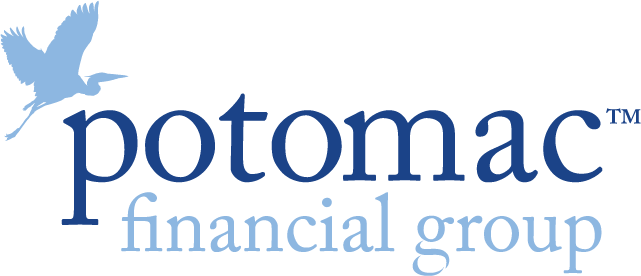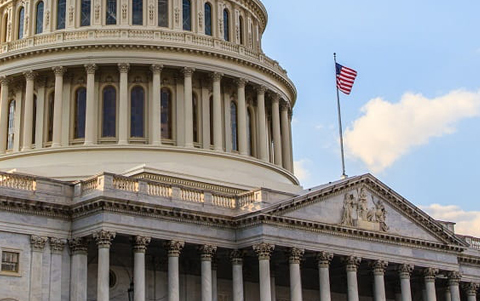Changes for investors include RMD age increases, higher catch-up contribution limits and a new 529 transferal option.
Passed in December 2022, the SECURE Act 2.0 includes a comprehensive set of provisions intended to help many Americans and employers with retirement saving. Many of its provisions are not detailed here, so please contact your financial advisor to see how this new legislation affects your financial plan.
Retirement saving rule changes
Higher catch-up contribution allowances
For those age 60-63, the catch-up contribution limit will increase to the greater of $10,000 or 150% of the regular catch-up amount for 401(k) and similar type plans. The higher allowance is effective starting in 2025. Similarly, SIMPLE plan participants who are age 60, 61, 62 or 63 will have their plan catch-up contribution limit increased to the greater of $5,000 or 150% of the regular SIMPLE catch-up contribution amount for 2025, indexed for inflation.
Cost of living adjustments to IRA catch-up contributions
Individuals age 50 and older can currently contribute an additional $1,000 to either a traditional or Roth IRA. Beginning in 2024, catch-up contributions will be indexed for inflation.
Required minimum distribution (RMD) changes
Increased RMD age
Individuals that turn 72 in 2023 and beyond can now delay taking RMDs from their IRA until the year they turn 73. The RMD start age will move to age 75 in 2033. The increase allows some people to continue with tax deferral on their qualified accounts and provides an expanded time frame for strategic Roth conversions.
Reduced penalty for missed RMDs
If an RMD is not satisfied for the current year, a 50% penalty can be assessed on the amount not withdrawn. Effective immediately, the SECURE Act 2.0 decreases that penalty to 25% on the amount not withdrawn. If the missed RMD is taken within a “correction window,” the penalty is reduced to 10%.
Qualified charitable distribution (QCD) changes
While the RMD age increased to 73, the age an individual can use QCDs remains at 70 1/2. This is good news for those wishing to begin QCDs before RMD age.
For those eligible, QCDs are currently capped at $100,000 annually. With the passage of the SECURE Act 2.0, this limit will be indexed for inflation.
Beginning in 2023, a one-time QCD of up to $50,000 can be directed towards a split-interest entity such as a Charitable Remainder Annuity Trust (CRAT), Charitable Remainder Unitrust (CRUT) or Charitable Gift Annuity (CGA). To qualify, the distribution cannot be added to an existing CRAT, CRUT, or CGA and must fund a new one.
Transfer of excess 529 funds to a Roth IRA
Effective in 2024, a beneficiary’s unused 529 funds may be transferred to a Roth IRA in the name of the beneficiary, subject to several rules:
- The lifetime amount that can be transferred is $35,000 and is subject to the annual contribution limits (a Roth contribution for the year will reduce the amount that can be transferred from the 529 for that year).
- The 529 plan has to be established for at least 15 years and no funds (or associated earnings) that were contributed in the previous five years prior to the transfer may be used.
- There are no income limits or phase-out restrictions when making a 529 to Roth transfer.
Roth rule changes
Roth employer plan distributions
Prior to the SECURE Act 2.0, Roth IRA owners were exempt from taking RMDs. However, Roth accounts in employer plans, such as 401(k)s and 403(b)s were not exempt from the RMD rule. Effective 2024, individuals will no longer be required to take distributions from Roth accounts from employer plans.
Roth-style version of SEP and SIMPLE IRA accounts
Effective in the 2023 tax year, the SECURE Act 2.0 authorizes the creation of both SIMPLE Roth IRA accounts and SEP Roth IRA accounts. Prior to this change, SIMPLE and SEP plans could only include pretax funds.
Catch-up contributions required to be Roth for high wage earners
SECURE Act 2.0 requires that catch-up contributions for high income earners be made in Roth accounts starting in 2024. The new rule applies to catch-up contributions for 401(k), 403(b) and governmental 457 (b) plans, but not to catch-up contributions for IRAs, including SEP and SIMPLE IRAs. The Roth restriction on catch-up contributions imposed by the SECURE Act 2.0 applies to those with wages in excess of $145,000 (adjusted for inflation in the future) in the previous calendar year. At this time, it appears that the rule excludes self-employed individuals (e.g., sole proprietors and partners).
Retirement account withdrawal rule changes
Expansion of 10% penalty exceptions
Under SECURE Act 2.0, there is an expansion of the 10% penalty exceptions that apply to IRAs, employer plans or both.
Effective immediately:
- Employer plans increased the 10% penalty exception for those age 50 and above to include, among others, private firefighters and state and local corrections officers.
- The age 50 Public Safety Worker exception to the 10% penalty is expanded to include plan participants who separate from service before they reach age 50, but who have performed 25 or more years of service for the employer sponsoring the plan.
- There is a new exception to the 10% penalty for those who are terminally ill.
- Withdrawals of up to $22,000 from employer retirement accounts or IRAs are permitted for individuals affected by a federally declared disaster. These emergency-related withdrawals are permitted for disasters occurring on or after January 26, 2021. Taxes on the distribution may be spread over three years and may be repaid back to the retirement plan with a refund on taxes on the repaid amount.
Effective 2024:
- Emergency withdrawals for the expenses of individuals escaping domestic abuse situations are provided at the lesser of $10,000 or 50% of the value of the account. This can be repaid over three years with a refund of taxes on the repaid amount. Withdrawals under these rules avoid the 10% penalty.
- There is a new exception to the 10% penalty for family emergencies. Family emergencies are defined as “unforeseeable or immediate financial needs relating to necessary personal or family emergency expenses.”
Effective December 29, 2025:
- Retirement plans may distribute up to $2,500 per year for the payment of premiums for certain long-term care insurance contracts. Distributions from plans to pay such premiums are exempt from the additional 10% tax on early distributions. Note that only a policy that provides high quality coverage is eligible for the early distribution waiver of the 10% tax.
Beneficiary rule changes
Effective 2024, for the purpose of RMDs under a decedent spouse’s retirement plan, the surviving spouse can elect to be treated as the decedent spouse. This allows the surviving spouse to delay taking RMDs until the decedent spouse would have reached the applicable starting age and then take distributions using the Uniform Life Table and the decedent spouse’s life expectancy.
Annuity changes
Increased amounts for qualified longevity annuity contracts (QLACs)
Under previous rules, an individual could use the lesser of 25% or $155,000 of their retirement savings account or IRA to buy a QLAC. Effective immediately, the SECURE Act 2.0 eliminates the 25% of account balance limit on QLACs and increases the purchase amount to $200,000. However, legacy QLACs are still subject to the lesser of 25% or 155,000 maximum amount.
Income annuities held within qualified accounts
Effective immediately, income annuities held within qualified plans and IRAs are able to offer additional benefits without violating actuarial rules related to RMDs. Several new benefits are now available but the most notable one is the ability to offer an inflation adjusted increase to the income, not to exceed 5%.
Special needs trust and ABLE account changes
Modification of RMD rules for special needs trusts
The SECURE Act placed limits on the ability of beneficiaries of defined contribution retirement plans and IRAs to receive lifetime distributions after the account owner’s death. Special rules apply in the case of certain beneficiaries, such as those with a disability. The SECURE Act 2.0 clarifies that, in the case of a special needs trust established for a beneficiary with a disability, the trust may provide for a qualified charitable organization as the remainder beneficiary.
ABLE program rule changes
ABLE programs are tax-advantaged savings programs for certain people with disabilities. Distributions from an ABLE account are tax-free if used for qualified disability expenses of the designated beneficiary. Effective in 2026, ABLE accounts will be able to be established for individuals who become disabled prior to age 46 (an increase from age 26).
The content provided herein is based on an interpretation by Raymond James of the SECURE Act 2.0 and is not intended to be legal advice or provide a tax opinion. Please discuss these matters with the appropriate professional. This resource is a summary only and not meant to represent all provisions within the SECURE Act 2.0.

